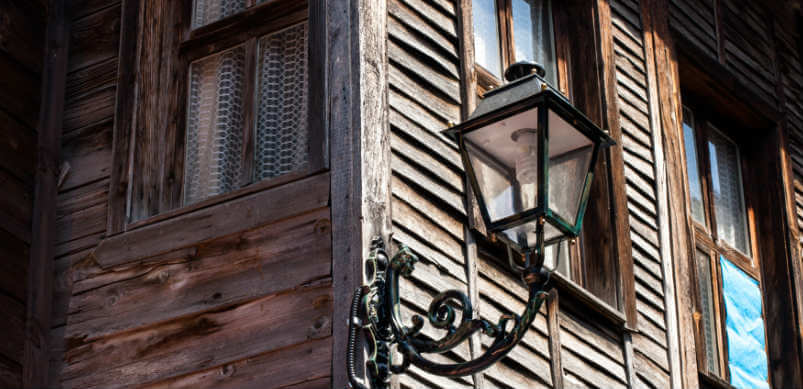
Small Fixes for Big Savings – Wooden Window Frames
September 29, 2014 | DIY & Home Improvement | Money Saving Tips & Tricks | No comments
As you pull up onto your driveway after a hard day at work, are you happy with the sight which greets you? Does the outside of your house do you justice? Now, at eSpares, we know that during the spring and summer months, many of you will have spent time mowing the lawn, weeding flowerbeds and trimming hedges to ensure that your garden (and invariably your home) looks neat and tidy, but what about the outside of the house itself?
The outside of your home not only gives visitors a first impression of you, but also offers the inside of your home invaluable protection against the elements; and with autumn fast approaching now is the perfect time to give the outside of your home a once over, particularly your wooden window frames, making sure that the frame is correctly sealed to prevent rainwater from coming in as the weather changes.
If, whilst giving your window frames a once over, you find that they’ve become rotten, the cost of repairing the fault need not be expensive; nor does it need to involve you replacing the frames, as with a few tools and following the simple steps below, you can repair your wooden frames and improve the outlook of your home yourself – although be warned that the repair work is not a quick task, and will require time and patience.
Step 1:
As with any DIY task, the first step to repairing rotten window frames is to make sure that you have the correct tools to hand; and for this job you’ll require a:
- Chisel
- Paint Scraper
- Paint Brush
- Sander / Sandpaper
You may also find that you’ll need a hot-air gun, depending on how damp damaged the frame is.
Step 2:
With the tools to hand, using the paint scraper remove any paint around the damaged area on your frame, before chiselling out the worst of the rot. If your window frame is significantly damaged / damp, use a hot-air gun to dry the wet timber.
Step 3:
Frame dry, use the paintbrush to apply a generous layer of wood hardener to the area which needs repairing; continue to apply the wood hardener until it stops soaking into the frame; and then leave to dry overnight.
Step 4:
Wood hardener dry, mix wood filler before applying a little at a time using the paint scraper. It’s worth noting that the filler will dry (depending on the conditions outside) in about five minutes, so it’s important to only mix a little at a time to ensure that you do not waste any.
During this step, layer the wood filler onto the damaged area, building the layers up progressively. How many layers you’ll need will depend primarily on how deep the damaged area is.
Step 5:
Once the wood filler has dried, you’ll need to sand down the repaired area. Ideally, an electric sander should be used at this stage, and to help keep your sander working to its full potential so that it is ready for jobs like this, at eSpares we stock an extensive selection of wood sander spare parts and accessories such as sander plates.
However, if an electronic sander is not available, coarse sandpaper will do the trick although this will require more elbow grease and hard work on your part.
Step 6:
With the area sanded and any small holes / cracks refilled, drill a number of 10mm wide holes which are roughly 20mm deep around the repaired area, leaving a space of 50mm around each hole, and then push wood preservative pellets into the holes; before priming and repainting your window frame to provide the perfect finish.
As an extra step to repairing rotten wooden window frames, you should also replace any brittle or cracked window putty, as repairing this will prevent draughts from getting into your home, at the same time as keeping the rainwater outside.
To replace the putty, carefully remove the old putty with a chisel (or flathead screwdriver is a chisel isn’t available) before spreading on a new layer and smoothing it out with a putty knife.
Once you’ve checked (and repaired) your wooden window frames, it’s a good idea to check points around the outside of your home to make sure that they are sealed and will prevent the elements from entering the home.
At eSpares, we recommend checking sealants around areas where pipes and / or cables enter the home and around doorsteps. To check the sealant is still intact, poke it with a flathead screwdriver. If the sealant cracks or tears, it’ll need replacing before the winter weather arrives, to ensure that your home is protected.
Carrying out the repair of your wooden window frames yourself, although may be time consuming, will save your money in both the short and long term, whilst also improving the aesthetics of the outside of your home whilst complimenting the garden which you’ve spent the spring and summer months perfecting.
Tags: DIY, Home Improvements, Wooden Windows

